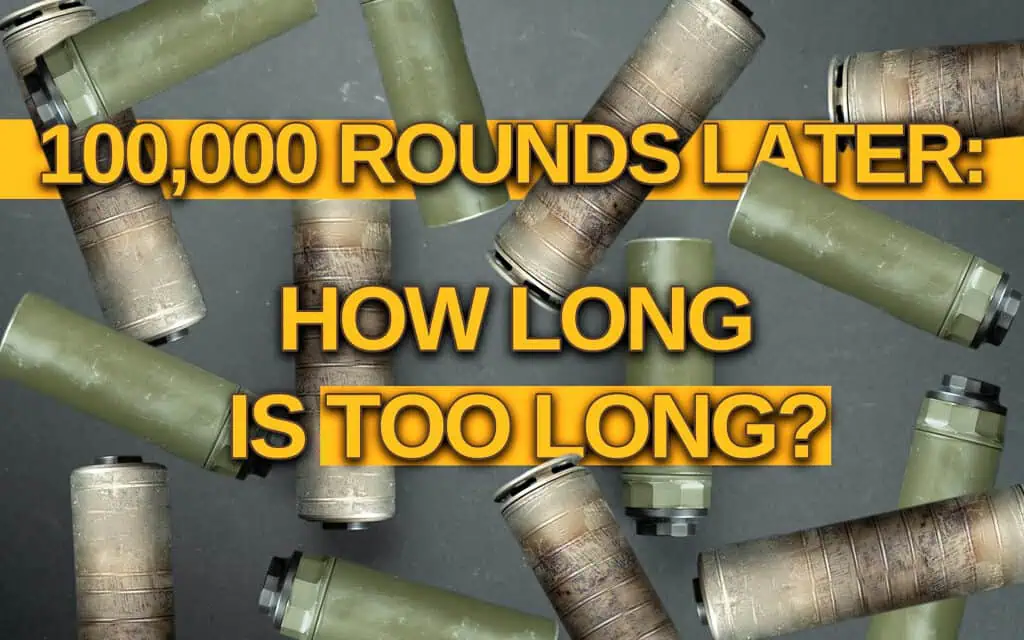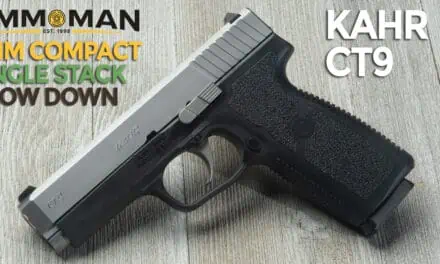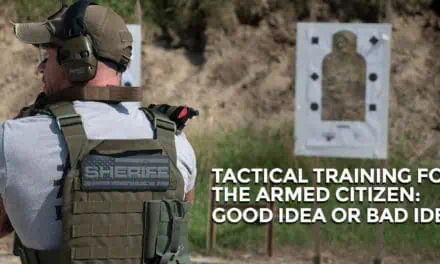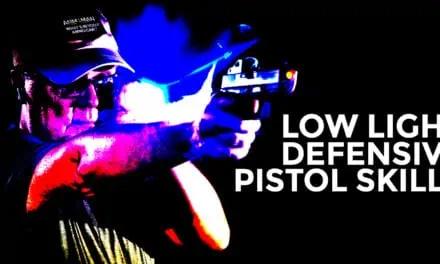How long does a suppressor last? Unfortunately, it’s a simple question but a complicated answer. This is what getting into the nitty gritty details of shooting is all about! Hopefully today we can simplify the variables for you.
How Long Does a Suppressor Last?
A lifespan of a suppressor will vary greatly depending on your firing schedule. In general, as long as you allow your suppressor to cool periodically between firing sequences, and clean it when necessary, you can expect it to last thousands of rounds. Maybe not quite 100,000 rounds, but with the right suppressor and proper care, I’m sure someone has gotten close!
If you want a quick overview on the topic of durability plus some other common questions. check out the video below!
That’s the quick answer but there is a lot more to it. Let’s look at the most impactful factors of suppressor durability.
Suppressor Durability: What Affects It Most
Some suppressors may last a lifetime, while others may reach their final stages within a year. The most prominent factors are your shooting habits, the materials used in manufacturing, and maintenance. Each play a significant role in the longevity of a suppressor.
Volume of Fire
Occasional plinking or infrequent range trips throughout the year are nothing to be concerned about. What damages your suppressor is a high volume of fire consisting of mag-dumps or full-auto fire.
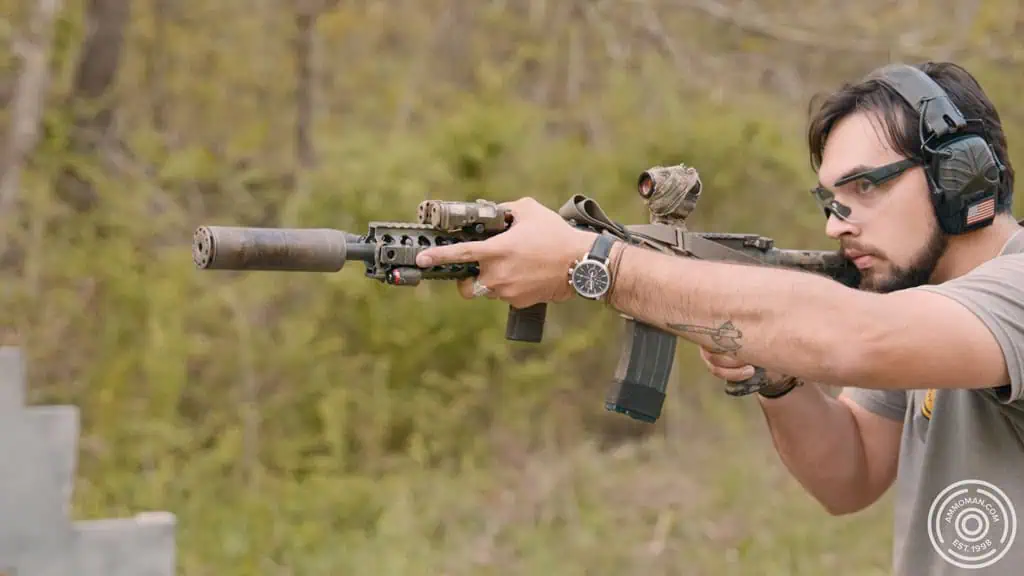
Be sure to allow your suppressor to cool down whenever possible!
Rapid fire quickly generates heat in the suppressor which is trying to trap the gas and slow it down as the bullet exits. This increased temperature degrades the blast baffle and walls of your suppressor, eventually causing a fracture due to stress or carbon build-up.
In order to mitigate this, simply allow your suppressor periodic breaks to cool down between long strings of fire.
Materials: Titanium vs. Steel
There is a wide variety of materials used in the manufacturing process. Here are some you’ll see when searching:
- Stainless Steel
- Inconel
- Titanium
- Aluminum
The most common options are steel and titanium suppressors. We may do a larger comparison at some point, but for now the basic principle is that steel suppressors are durable and affordable.
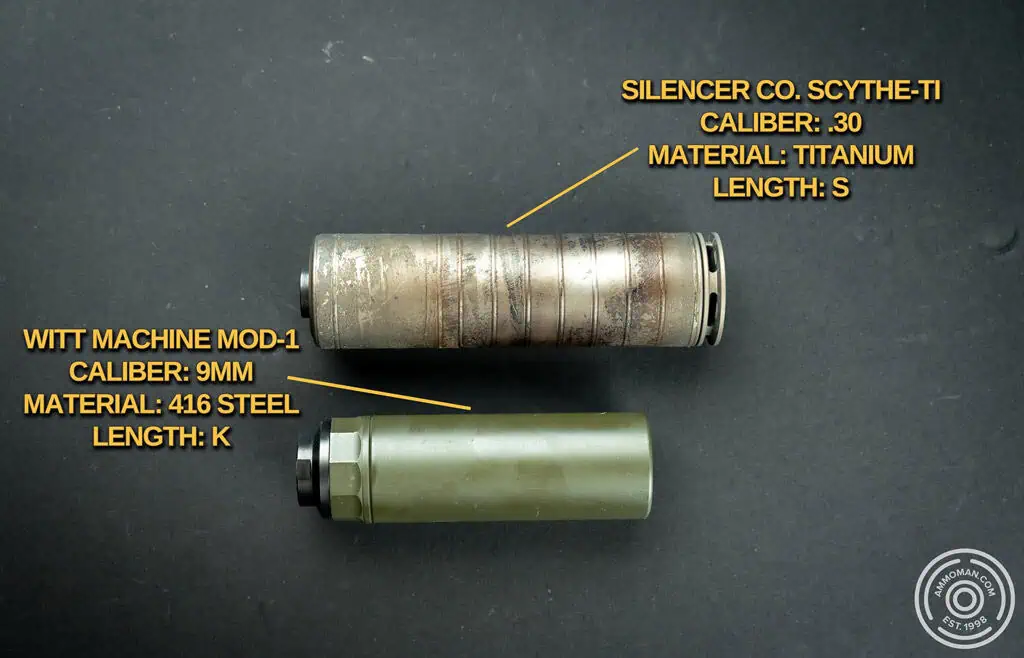
Choosing the material your suppressor is made out of is important.
Titanium suppressors are known for being lightweight, corrosion-resistant, but not necessarily ideal for hard use on high caliber rifles. They are often a great option for hunters or precision shooters.
Suppressor Maintenance
Lastly, one of the primary culprits of suppressor life is maintenance! Not every suppressor is serviceable for cleaning, but there are other things that are smart and responsible care habits you can implement.
- Shoot clean ammo or specifically suppressor friendly ammo
- Let it cool down between shooting
- Monitor performance by checking zero and listening for change in tone.
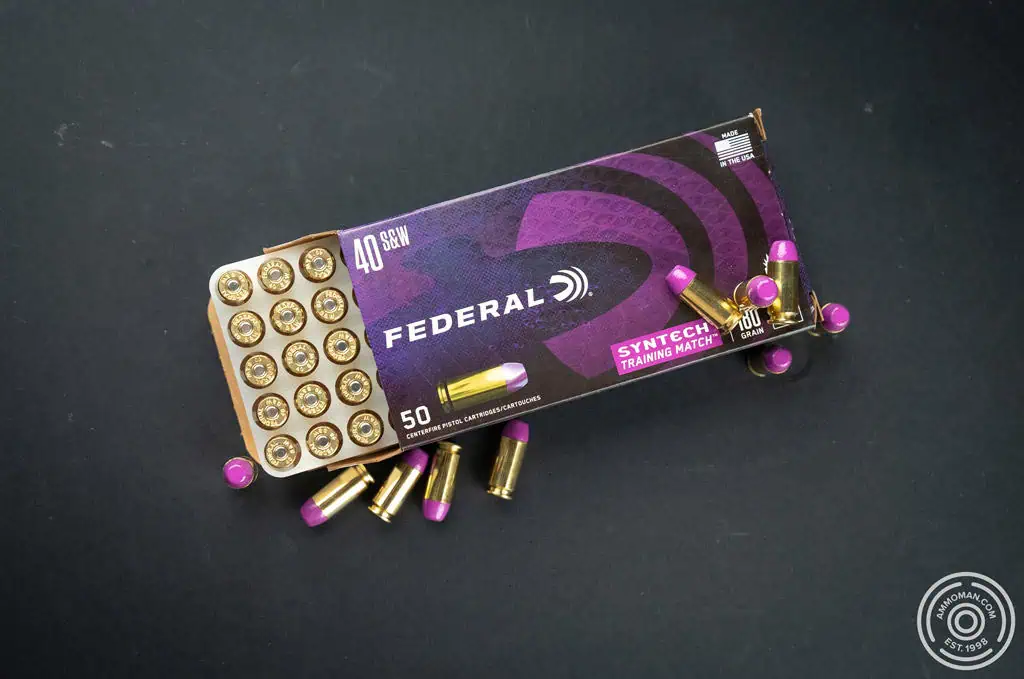
Federal Syntech .40 S&W ammunition – a great clean ammo choice
Other Durability Factors
We’d consider those the main factors impacting suppressor durability but there are some other, more minor things, that you should know too.
Caliber and High Pressure Rounds
High-pressure calibers like 5.56 and .300 Win Mag can accelerate wear on a suppressor, especially when mounted on short barrels. These setups take a tremendous toll on the blast baffle. You can balance this out by choosing a specifically rated suppressor, or by monitoring parts and replacing when needed.
Mounting Method
Another factor most users might not be aware of when it comes to durability is the mounting method used. If you choose to mount your suppressor using a muzzle device that directs the gasses to the sides, again it’s going to increase the wear and tear on the blast baffle and walls of the suppressor as opposed to threading it directly onto the barrel.
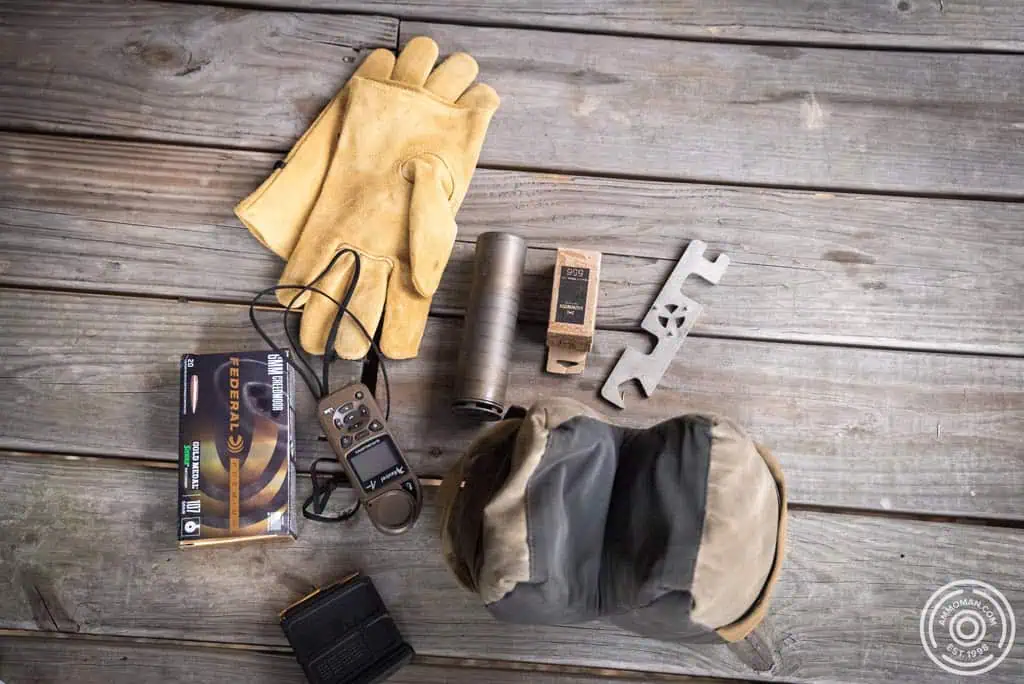
Using a quick attach suppressor vs. direct thread. Both methods have their advantages.
You have to balance your mounting preference while still ensuring you have proper alignment.
Poor alignment and baffle strikes from improper mounting can quickly shorten the life of a suppressor and could also cause serious injury. Make sure to check it with an alignment rod!
Suppressor Length
There are three length classes of suppressors: L, S and K.
“L” Suppressors: Long (7.5″ and above)
“S” Suppressors: Short (6-8″)
“K” Suppressors: Really Short (6″ and below)
Each have unique durability ratings depending on everything I have mentioned thus far. It will also matter whether or not you plan to use your suppressor on a bolt-action or a gas operated weapon. Generally speaking, longer suppressors will send more gas back into the shooters face as well as the internals of the weapon, creating more wear.
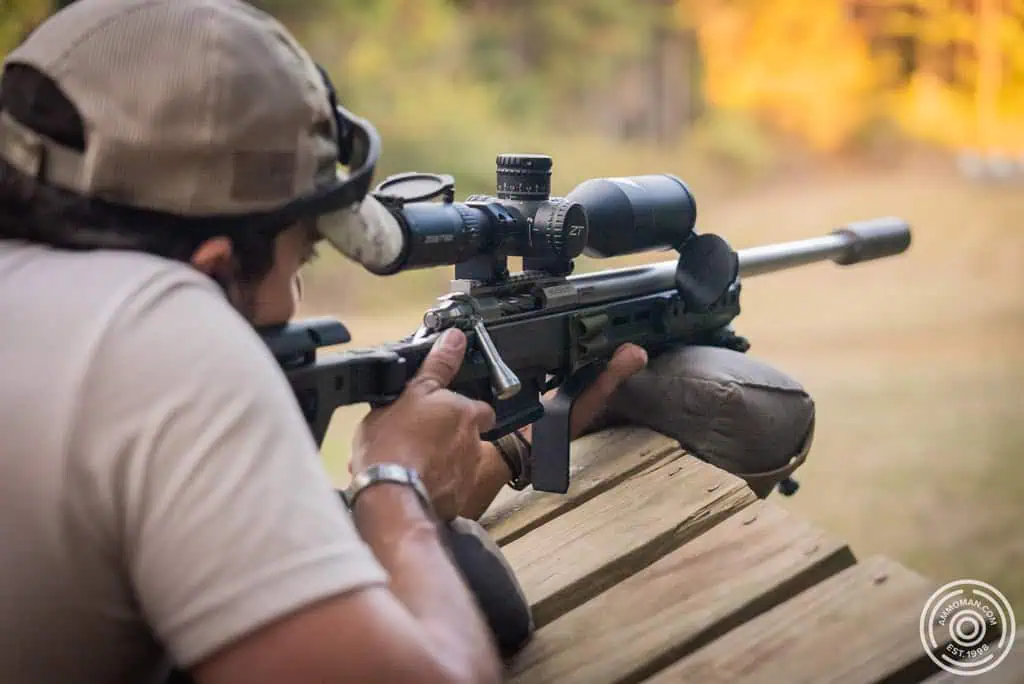
Kenneth shooting 6mm creedmoor with his Silencer Co. Scythe-Ti at the True Vine Foundation long distance range.
How to Increase the Life of Your Suppressor
To summarize everything mentioned throughout this article, here are the top 5 tips to increase the life of your suppressor:
- Avoid Overheating: Try to let it cool down between strings.
- Keep it Clean: This is especially important for rimfire calibers like .22 LR. Carbon and lead quickly buildup inside .22 suppressors and will affect performance and durability.
- Try Using a Blast Shield or Replaceable Blast Baffle: Using a serviceable suppressor where you can replace the blast baffle helps preserve the part that sees the most abuse.
- Be Mindful of Calibers and Barrel Lengths: Avoid excessive short-barrel use unless your suppressor is rated for it.
- Keep Dry: If possible, keep your suppressors dry, and store vertically. Avoid moisture inside the can to prevent corrosion. This is especially important with aluminum or steel cans.
How to Look for Suppressor Wear
Let’s take a moment to discuss what “wear and tear” actually means for suppressors.
Your suppressor gets worn out by baffle erosion. This happens through intense firing schedules where you are heating up your suppressor and chunks of lead and carbon are being thrown into the baffles as the bullet passes through. Eventually it will break down and cause other issues like a point of impact (POI) shift, and reduced sound suppression.
Pay attention from time to time if your suppressor starts to sound louder, or if you’re unable to maintain accuracy like you used to. These could be signs of a suppressor that’s getting worn down.
Conclusion: How Long Will Your Suppressor Last?
Your suppressor is going to last as long as you are willing to care for it. Yes, eventually it may come time to replace it, but like I said at the beginning, as long as you take care of it and don’t put it through too much abuse with high volume firing at one time…You’ll be A-OK!
My best advice is to take some time before purchasing your suppressor and determine what sort of longevity you’re hoping to get from it. Be honest with yourself and if you shoot a lot, you may want to pick a more rugged option that can hold up to your use case and is still serviceable for cleaning or replacing parts. For those who only go to the range a few times a year, you may be fine to simply look for the best priced option that offers the sound reduction you want.
If you’ve enjoyed this article please consider leaving a review, or following one of our social accounts, and remember: If your mags are feeling light, it’s time to make it right, at Ammoman!

